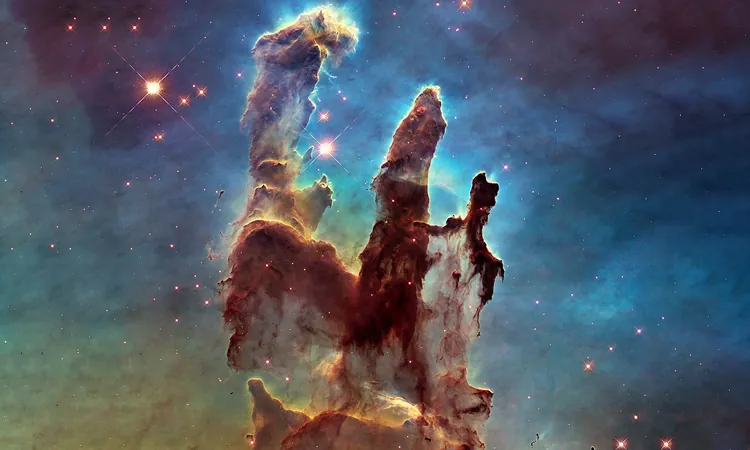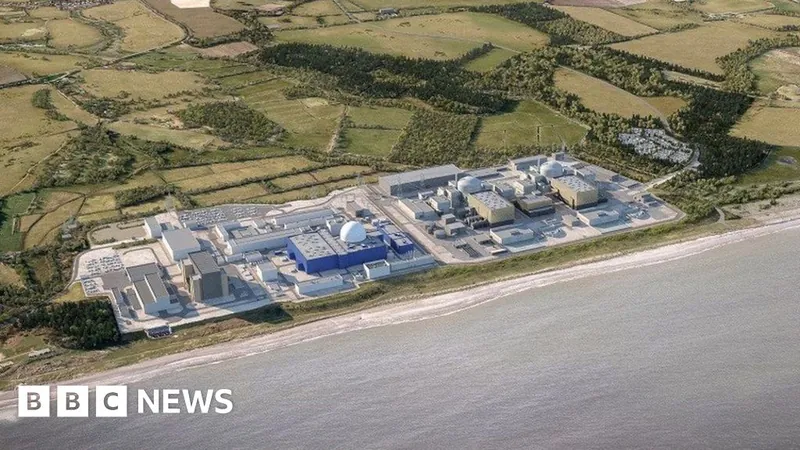
Celebrating 35 Years of Hubble: The Telescope That Revolutionized Our Understanding of the Cosmos
2025-05-03
Author: Wai
A Milestone of Discovery
The Hubble Space Telescope, hailed as the most illustrious observatory in history, has reached a remarkable milestone: 35 years of groundbreaking discoveries. To celebrate this event, NASA has unveiled a stunning new gallery of images that showcase the wonders of our solar system and beyond, from the rust-hued surface of Mars to breathtaking star-forming nebulae and neighboring galaxies.
From Blurry Beginnings to Stunning Revelation
Launched aboard the Space Shuttle Discovery on April 24, 1990, Hubble was heralded as 'a new window on the universe.' However, initial excitement gave way to disappointment when engineers discovered a flaw in its mirror that rendered early images frustratingly blurry. The turning point came in December 1993, when astronauts undertook a complex servicing mission to install corrective optics—akin to an optical 'contact lens'—and upgrade Hubble’s instruments.
An Unparalleled Legacy of Science
Since those initial setbacks, Hubble has amassed nearly 1.7 million observations of about 55,000 celestial objects. This wealth of data has led to over 22,000 peer-reviewed papers and more than 1.3 million citations, securing Hubble's status as the most scientifically productive telescope ever built.
Hubble's extensive archive, totaling over 400 terabytes, remains open to the public, sparking new discoveries every year and allowing astronomers to revisit cosmic phenomena to study their evolution.
Revolutionizing Our Cosmic Perspective
Prior to Hubble's breakthroughs, ground-based telescopes struggled to penetrate the mysteries of the universe due to Earth’s turbulent atmosphere. Estimates of cosmic age were wildly inconsistent, and the existence of exoplanets was still unverified. Hubble changed that narrative with its legendary Deep Field images, unveiling a treasure trove of ancient galaxies dating back over 13 billion years.
By accurately measuring cosmic expansion and revealing dark energy, Hubble's findings earned a Nobel Prize in Physics in 2011. It confirmed the existence of supermassive black holes at the center of most galaxies and provided the first glimpses of exoplanet atmospheres.
Engineering Marvel and Ongoing Innovations
Hubble's success is also attributed to its design, which allows for servicing. From 1993 to 2009, five shuttle missions transformed Hubble into a continuously evolving observatory. Engineers have since developed innovative software updates and remote troubleshooting techniques to keep it operational, ensuring it continues to contribute to the study of exoplanets and distant galaxy formations.
A Cultural Icon of Inspiration
Beyond its scientific prowess, Hubble has captured the public imagination with breathtaking images like the Pillars of Creation and Sombrero Galaxy, inspiring artists and filmmakers alike. Its ability to translate complex astrophysical data into stunning visuals has democratized deep-space exploration, inviting everyone to marvel at the cosmos.
What Lies Ahead: The Habitable Worlds Observatory
Future prospects are bright, as Hubble's legacy will pave the way for the upcoming Habitable Worlds Observatory (HWO), expected in the 2040s. With a significantly larger mirror and enhanced capabilities, HWO aims to be a hundred times more sensitive, focusing on the quest for Earth-like planets and potential life in their atmospheres.
Continuing the Journey
As Hubble continues to orbit Earth every 97 minutes at an altitude of around 330 miles, it consistently contributes to our understanding of the universe. Each new day brings fresh insights into cosmic phenomena, affirming Hubble's role as a beacon of curiosity, innovation, and human endeavor.
NASA's recent image release serves not just as a birthday tribute but as an enduring reminder that the Hubble Space Telescope remains our 'new window on the universe,' beckoning us all to look up and dream.



 Brasil (PT)
Brasil (PT)
 Canada (EN)
Canada (EN)
 Chile (ES)
Chile (ES)
 Česko (CS)
Česko (CS)
 대한민국 (KO)
대한민국 (KO)
 España (ES)
España (ES)
 France (FR)
France (FR)
 Hong Kong (EN)
Hong Kong (EN)
 Italia (IT)
Italia (IT)
 日本 (JA)
日本 (JA)
 Magyarország (HU)
Magyarország (HU)
 Norge (NO)
Norge (NO)
 Polska (PL)
Polska (PL)
 Schweiz (DE)
Schweiz (DE)
 Singapore (EN)
Singapore (EN)
 Sverige (SV)
Sverige (SV)
 Suomi (FI)
Suomi (FI)
 Türkiye (TR)
Türkiye (TR)
 الإمارات العربية المتحدة (AR)
الإمارات العربية المتحدة (AR)